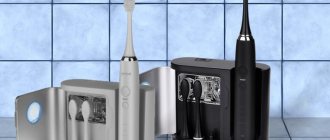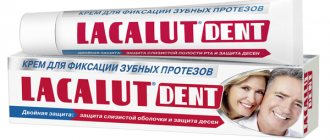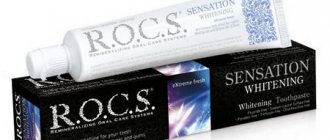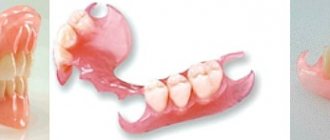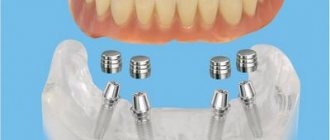What does a dental surgeon treat?
Treatment of dental diseases often requires an integrated approach, so the use of surgical methods is one of the stages of sequential treatment measures.
A dental surgeon is a specialized specialist whose areas of activity include:
- removal of teeth or part of a tooth;
- treatment of inflammatory processes in the gums, jaw and face;
- elimination of jaw and facial defects (congenital and acquired);
- removal of neoplasms of the maxillofacial area.
In addition, the dental surgeon, together with the orthopedist, prepares the oral cavity for dental implantation and carries out cosmetic correction of the maxillofacial and oral area (vestibuloplasty, gingivoplasty, correction of the alveolar process, frenuloplasty, etc.).
A pediatric dental surgeon treats dental diseases of the maxillofacial area in children.
Features of working with children
Working with children requires from the surgeon not only high professionalism, but also psychological preparation, as well as perseverance. It is a rare child who comes to see the dentist without fear.
We invite you to read: Treat or remove wisdom teeth – all the pros and cons
Regardless of the upcoming manipulations, all children experience increased anxiety at the sight of dental equipment and many of them react violently with reluctance to listen to the doctor. To avoid this, the surgeon must be able to find an approach to every child of any age.
The process of establishing anesthesia is considered in a special way. The situation is greatly facilitated by topical anesthesia, used before the main anesthetic injection.
Children's age limits the volume of the drug administered and the time for the doctor's manipulations, so his actions must be quick and clear.
What diseases does a dental surgeon treat?
A dental surgeon treats dental diseases that are not amenable to conservative therapy. Most often, this specialist deals with the pathology of teeth, jaw joints, salivary glands and oral mucosa, injuries and neoplasms of the jaws, as well as inflammatory processes in the perimaxillary area. In addition, the tasks of a dental surgeon include the prevention of heart disease.
Diseases of teeth and gums
A dental surgeon treats:
- Alveolitis is an acute inflammation of the socket that develops after tooth extraction as a result of a violation of the postoperative regime. With this disease, there is severe pain in the socket area, a putrid odor appears in the mouth, the submandibular nodes become enlarged, the temperature rises, weakness and headache are present.
- Dental hyperesthesia is an increased sensitivity of the hard tissues of the tooth, in which exposure to various irritants causes short-term pain of varying degrees of severity. It usually develops with non-carious lesions of teeth.
- Enamel hypoplasia is a change in the color of tooth enamel and its underdevelopment resulting from metabolic disorders during fetal development. The extreme expression of hypoplasia is the complete absence of enamel or tooth (aplasia).
- Dentition defects - a disturbed structure of the dental arch, which is accompanied by a violation of the bite and chewing function, leading to gradual deformation or atrophy of the jaw bone.
- Tartar is hardened plaque that is formed from food debris and microelements. It causes bleeding gums, an unpleasant odor, and when it grows into a gum pocket, it provokes the development of periodontitis.
This specialist also deals with the elimination of acute toothache and can treat pulpitis and caries.
Diseases of the jaw joints
A dental surgeon treats:
- Ankylosis of the temporomandibular joint. It manifests itself as a pathological impairment of the mobility of the lower jaw as a result of fibrous or bone fusions of the surface of the joints. They develop with purulent-inflammatory diseases in this area (including ENT organs). It manifests itself as a restriction when opening the mouth, the face acquires asymmetry, the bite, respiratory function, etc. are impaired.
- Temporomandibular arthritis. This inflammation of the joint can be infectious and non-infectious, acute and chronic. In the acute form, the skin in the affected area swells and turns red, a sharp pain appears, radiating to the temple and ear, it is difficult to open the mouth, and the body temperature is elevated.
- Dislocation of the temporomandibular joint. Occurs spontaneously or as a result of injury. With this pathology, slurred speech, drooling, inability to close teeth or open mouth are observed, severe pain and changes in facial configuration are present.
Diseases of the oral mucosa, tongue and salivary glands
Diseases of the oral mucosa and tongue treated by a dental surgeon include:
- Leukoplakia is increased keratinization, thickening and desquamation of the epithelium of the oral mucosa. Lesions (white-gray plaques) are detected on the tongue, on the inside of the cheeks, on the palate and in the corners of the mouth. Develops under the influence of production factors, poor oral hygiene, etc.
- Glossalgia is pain in the tongue area in the absence of visible pathologies. There is a burning sensation and pain in the tissues and membrane of the tongue, and dryness is felt in the oral cavity. This secondary disease can develop due to gastrointestinal diseases or trauma to the oral cavity.
- Xerostomia is a partial or complete cessation of salivation, which is accompanied by dryness in the throat and mouth, a burning sensation in the tongue, difficulty chewing and swallowing, as well as a disturbance in the sense of taste. It may occur as a symptom of an underlying disease or a side effect of medications.
Injuries and neoplasms of the maxillofacial area
A dental surgeon treats traumatic injury and tooth displacement (luxation), tooth or jaw fracture. This specialist also treats:
- Osteomyelitis of the jaws is a purulent infectious and inflammatory disease that affects all structural elements of the jaw bone. With this disease, fever, pain in the affected area, tooth mobility, limited mouth opening, etc. are observed. Leads to bone necrosis.
- A jaw cyst, which is a hollow formation with liquid contents. It often exists asymptomatically for a long time; when inflamed, it is accompanied by pain, swelling and bulging of the gums in the affected area.
Inflammatory diseases
Patients often turn to a dental surgeon with:
- Stomatitis is an inflammation of the oral mucosa. Foci of inflammation can be localized on the palate, the inner surface of the cheeks and lips. It develops when oral hygiene is poor, due to trauma, when salivation is impaired, as a result of the penetration of viruses or under the influence of allergens.
- Perimaxillary abscess - the appearance in the tissues of the maxillofacial area of a purulent focus, which develops with dental diseases, chronic tonsillitis, general infectious diseases and facial injuries. With an abscess, local swelling, redness and oscillation of the skin in the affected area, facial asymmetry, difficult and painful swallowing, and symptoms of intoxication are observed.
- Gingivitis – inflammation of the gums while maintaining the integrity of the connection between teeth and gums. Occurs with the development of pathological microflora in the oral cavity, weakened immunity, hormonal imbalance and chronic injuries. It can be acute or chronic, manifested by redness and swelling of the gums, bleeding and the appearance of deposits on the teeth.
- Perimaxillary phlegmon - purulent melting of the subcutaneous tissue in the jaw and face. When the disease occurs, the jaw area becomes sharply painful, the mouth opens with restriction, swallowing is difficult, and the face and neck become swollen. There is a high temperature, the general condition is serious.
- Dental sepsis is a chronic inflammation of the oral cavity that develops with improper treatment or lack of dental treatment. Accompanied by weakness, increased fatigue and headache.
- Glossitis is inflammation of the tongue. Primary inflammation develops due to injuries to the tissues of the tongue, and secondary inflammation due to other diseases.
- Cheilitis is an inflammation of the border and mucous membrane of the lips, which can be streptococcal or fungal. Develops with a lack of vitamin B2, diabetes mellitus and weeping skin in the corners of the mouth. It is manifested by the formation of slit-like erosions and slight pain at the site of the lesion.
- Periodontitis is an inflammation of the tissues around the tooth (periodontium), which causes progressive destruction of the structure of the alveolar process of the jaw. It manifests itself as bleeding gums and loose teeth. An aggressive form of the disease is periodontal disease.
- Pericoronitis - inflammation of the gum tissue during teething.
- Flux – inflammation of the periosteum in the area of a tooth affected by caries. It manifests itself as pain, which intensifies when pressing on the diseased tooth.
They also turn to a dental surgeon for infectious myocarditis, which develops with chronic diseases of the oral cavity, bleeding in the oral cavity, inflammation of the trigeminal nerve, etc.
Cosmetic surgeries
Sometimes it is necessary to resort to complex intervention when the tissues of the oral cavity are relatively healthy. These may be cases of uneven distribution of gums or other defects that create only aesthetic problems. Similar correction methods include:
- Gingivoplasty is very similar to flap surgery, but differs in some nuances. Most often, it is resorted to due to the abnormal position of the gums.
- Vestibuloplasty – to expand the vestibule of the oral cavity. If it is naturally too small, then sometimes you need to move the facial muscles a little deeper. Thus, the problem of speech defects is solved and some diseases of periodontal tissue are prevented.
- Frenuloplasty - popularly this procedure is known as cutting the frenulum in the area of the lip or tongue. This anomaly is detected in childhood and the sooner it is eliminated, the more problems can be prevented in the future. Thus, an incorrect frenulum can lead to speech therapy difficulties, speech impairment, the formation of gaps between units, etc.
- Surgical elimination of gum recession (too little of it), especially in cases of exposed tooth roots and the need for additional flap surgery to restore it. Thus, the doctor takes tissue from one part of the oral cavity and places it on the desired area. Ten days are enough for recovery and correction.
When to contact a dental surgeon
In most cases, patients are referred to a dental surgeon by dental therapists, orthodontists or doctors of other specialties.
Consultation with a dental surgeon is necessary for people who:
- there is an exacerbation of chronic periodontitis, and conservative treatment is ineffective;
- the crown part of the tooth is destroyed and there is no way to restore it;
- there is a need to remove one tooth for the normal growth of other teeth;
- there is a need to remove wisdom teeth;
- a jaw injury occurred;
- there is a restriction when opening the mouth;
- there is pronounced tooth mobility;
- pain occurs in the teeth when eating hot or cold food;
- there is a sharp toothache, etc.
You can also contact this specialist with cosmetic defects of the lips, tongue frenulum, etc.
List of required specialist knowledge
To cope with the task, a dental surgeon must have extensive and accurate knowledge. To make the correct diagnosis, as well as successful treatment and carry out any corrective work that requires his intervention, such a doctor must understand:
- the structure of all soft and hard tissues of the oral cavity;
- features of the jaw apparatus, its functioning;
- diagnostic results carried out to identify dental problems and defects;
- related sciences, such as implantology, therapy, orthodontics and even psychology.
In addition to direct dental knowledge and surgical nuances, such a doctor must be able to establish contact with patients. After all, visiting a dentist always causes fear in a person, and going to a surgeon can even lead to panic. Therefore, he must be able to win over the patient and create an atmosphere of mutual understanding and comfort.
Treatment
Methods of surgical treatment of dental diseases depend on the type and severity of the pathology. Applicable:
- cystectomy to remove the cyst while preserving the teeth;
- sinus lift to restore bone tissue before installing an implant;
- hemisection to remove the affected root while preserving the tooth;
- gingivotomy to eliminate periodontal abscess by cutting the gum pocket, etc.
The main principle of treatment is minimal intervention in the tooth structure and, if possible, preservation of natural teeth.
